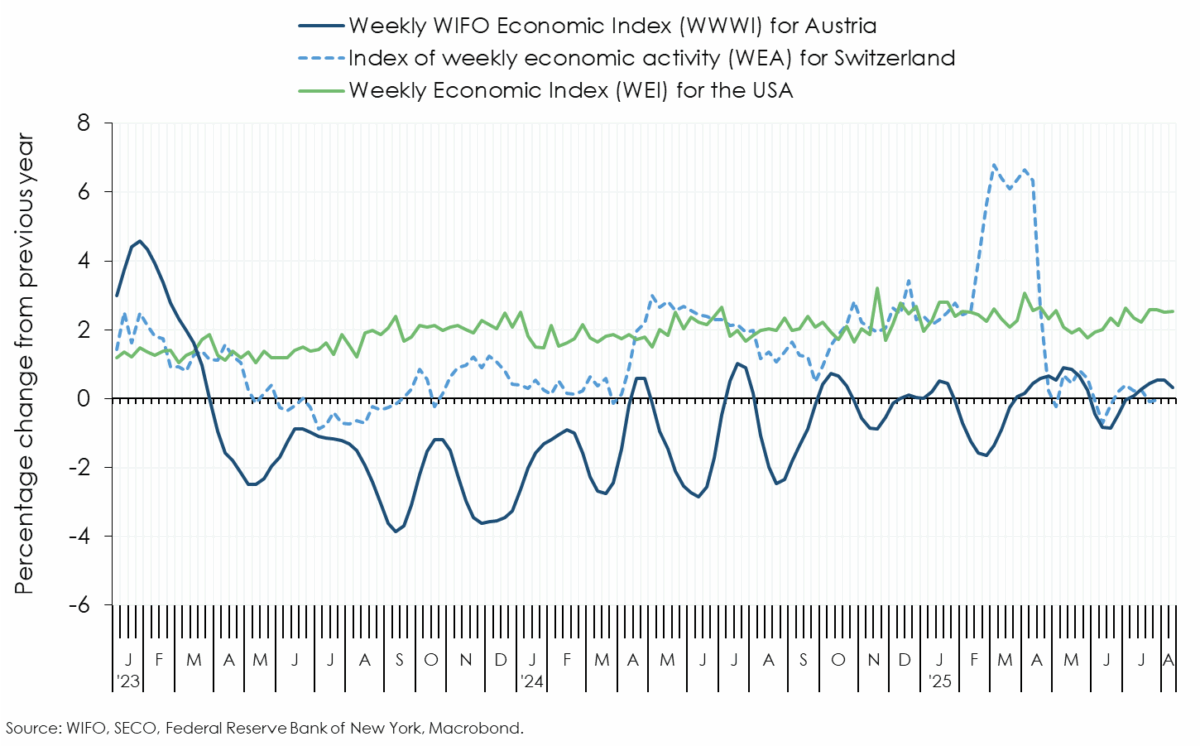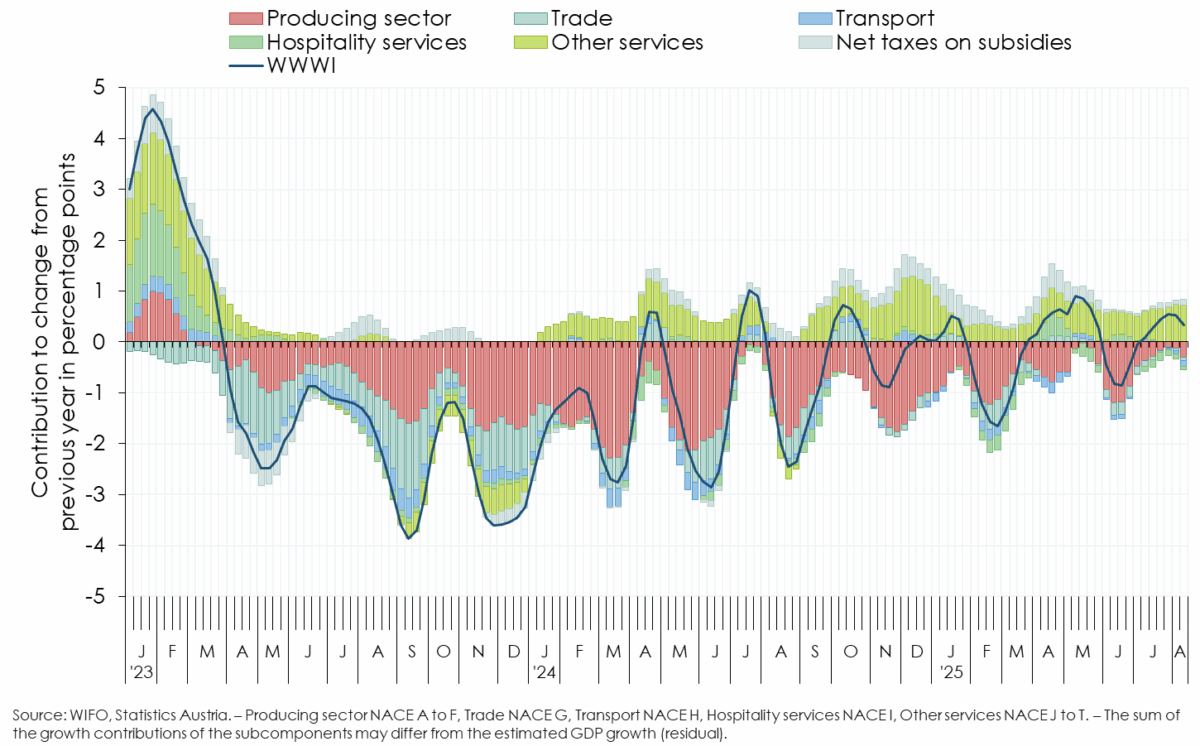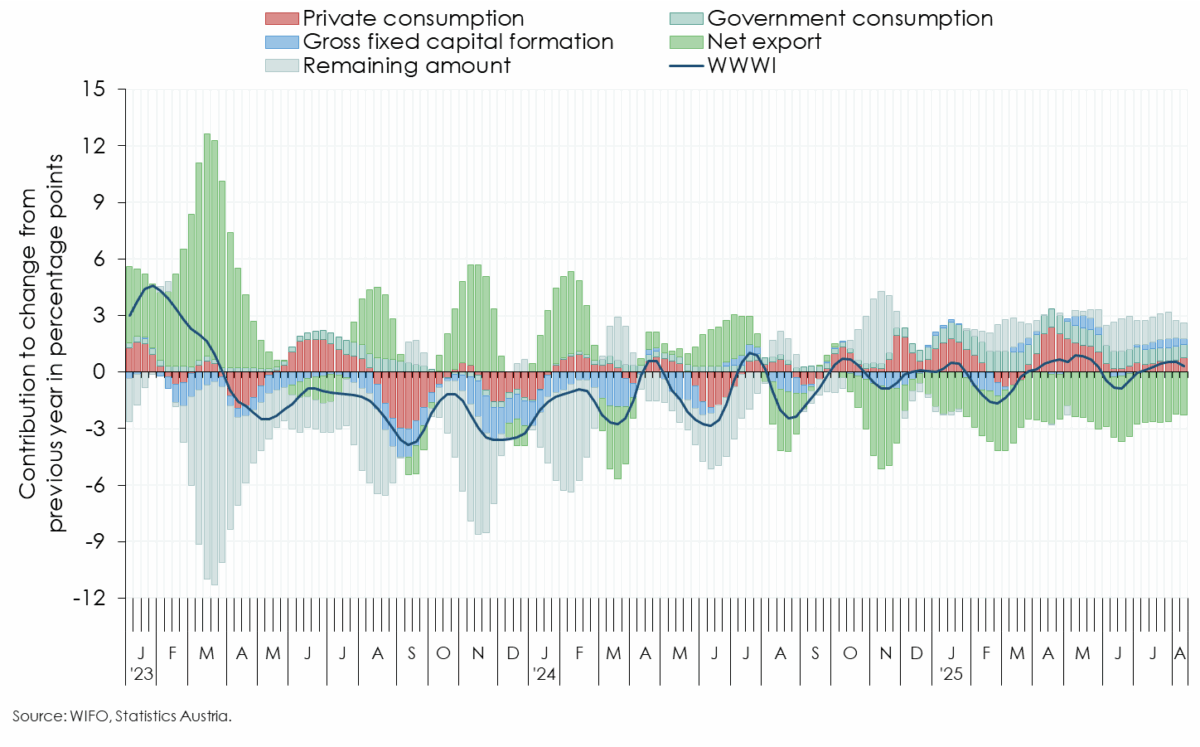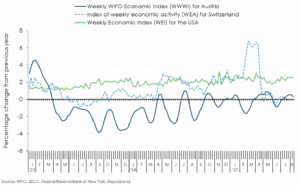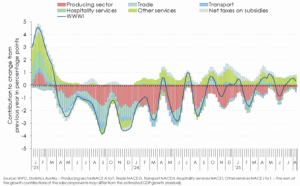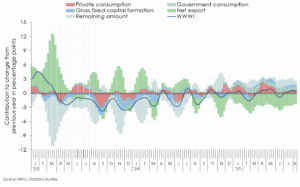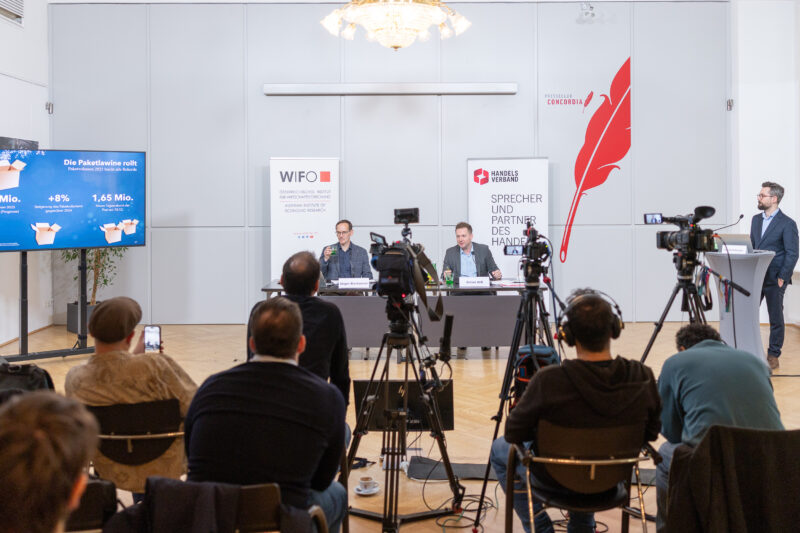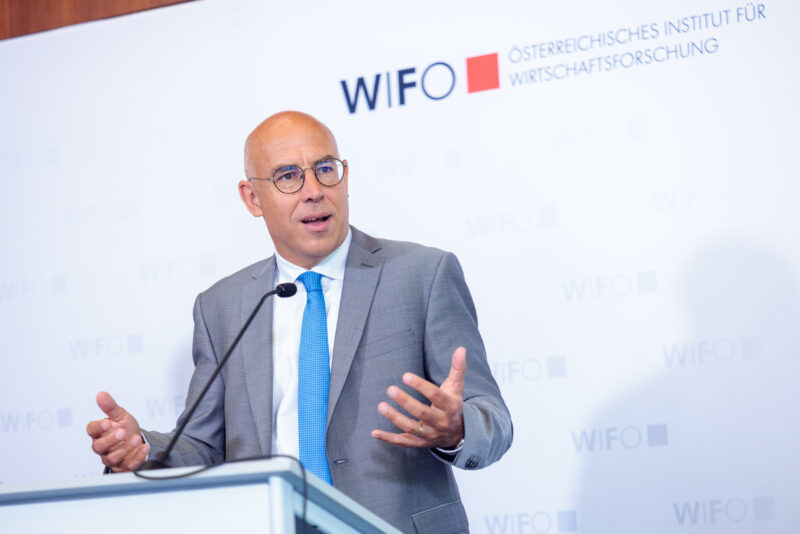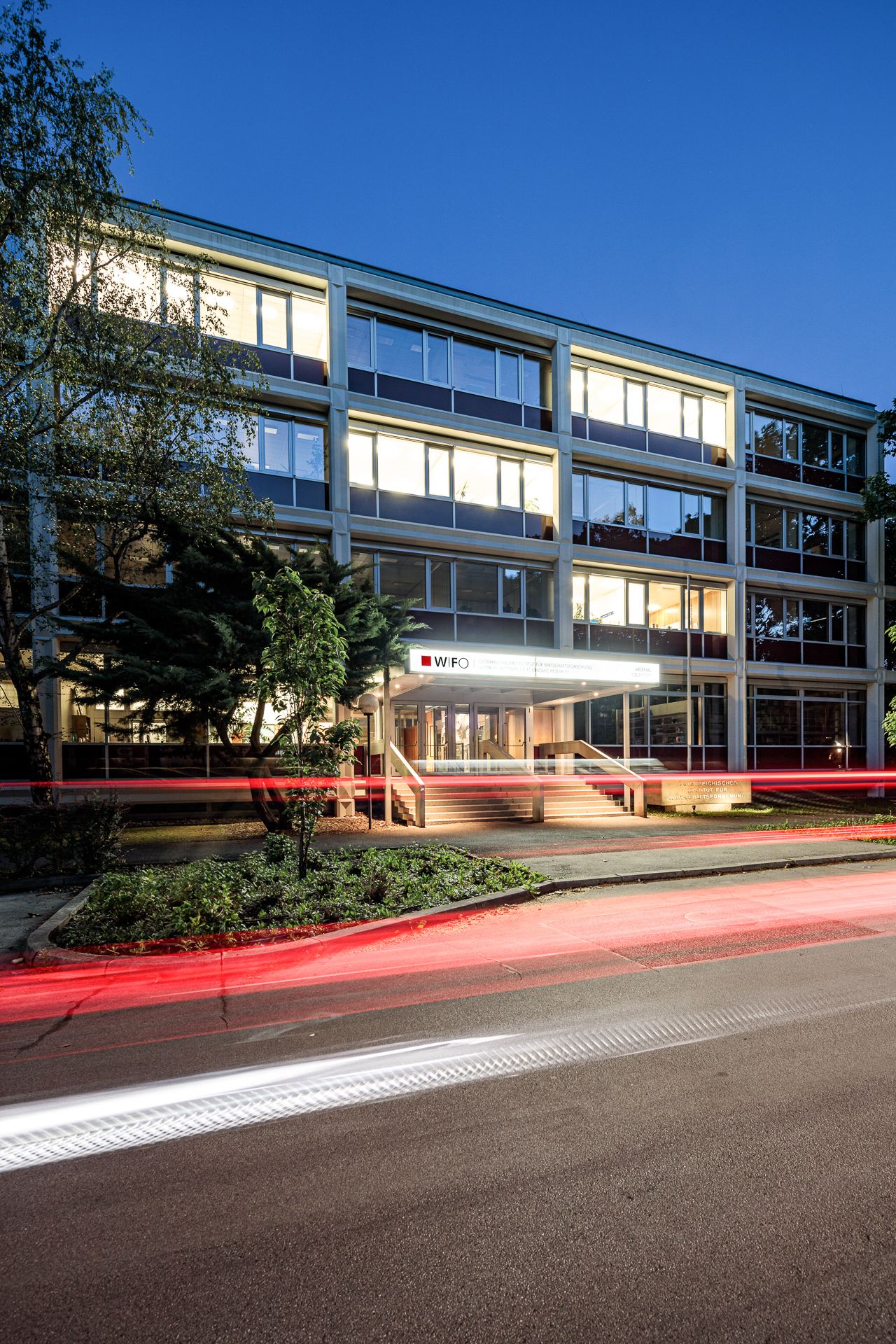
Weekly WIFO Economic Index
WWWI for GDP and its subcomponents
Based on the weekly indicator for GDP (WWWI), unadjusted domestic economic output rose by ¼ percent year-on-year in July (calendar weeks 27 to 31) and by ½ percent in the first half of August (June –½ percent)1.
The inflation-adjusted volume of non-cash transactions, serving as an indicator of household consumption expenditure, shows a stronger year-on-year increase in demand for goods (retail sales) than for services in July. Private consumption is likely to have been 1 percent higher in July and 1¼ percent higher in the first two weeks of August than in the same period last year (June +½ percent).
The development of gross fixed capital formation is determined by estimated economic output (industrial production) and the mood in the manufacturing sector as measured by the WIFO-Konjunkturtest (business cycle survey). In July, investment is likely to have increased by 1½% compared with the previous year (June –½ percent).
Developments of industrial production and tourism, as well as the major demand components and the resulting effects on foreign trade, resulted in a negative contribution to GDP growth of –2¾ percentage points for net exports in July (June –3¼ percentage points).
Truck mileage on Austria's motorways, rail freight transport, passenger volumes and air freight handled at Vienna Airport all increased in July compared with the previous year. According to the WIFO-Konjunkturtest, the majority of companies in the transport sector assess their current business situation as slightly positive. Based on these indicators, value added in the transport sector (NACE 2008, section H) is expected to increase by ½ percent year-on-year in July (June –1½ percent).
Employment in the goods-producing sector (NACE 2008, sections A to E) continued to decline due to the recession, and the growth in the number of job seekers, which had been in double digits since November 2023 compared to the previous year, returned to single digits in July. The WIFO-Konjunkturtest continues to show a negative mood in its current assessments of the situation. WIFO expects economic output in the goods-producing sector to be ½ percent lower in July and the first half of August than in the previous year (June –3¼ percent).
The mood among construction companies is slowly brightening, and some indicators have already turned positive. However, after temporary declines at the beginning of the year, the number of people registered as unemployed in the construction industry has been rising again since April. Employment also continued to decline. Value added in construction (NACE 2008, section F) is estimated to be 3 percent lower in July and 2¼ percent lower in the first two weeks of August than in the same period last year (June –7¼ percent).
Based on cashless transactions in the restaurant and hotel sector and sentiment indicators from the WIFO-Konjunkturtest, value added in tourism (accommodation and food services, NACE 2008, section I) is estimated to be 2½ percent lower in July and 2 percent lower in the first two weeks of August than in the same period last year (June +3½ percent).
In trade (NACE 2008, section G), value added is expected to decline by ¾ percent in July and ½ percent in the first two weeks of August compared with the previous year (June –2 percent).
Based on the current employment situation and the sentiment indicators from the WIFO-Konjunkturtest, value added in remaining market services (NACE 2008, sections J to N) is estimated to be ¾ percent higher in July and 1¼ percent higher in the first two weeks of August than in the same period last year (June 0 percent).
Value added in other personal services (NACE 2008, sections R to T) is estimated to be 3 percent lower than in the previous year (June –3½ percent) based on employment trends and company expectations according to the WIFO-Konjunkturtest in July and ½ percent lower in the first two weeks of August.
1 The inclusion of newly published and revised monthly data, which must be fulfilled when estimating the WWWI, led to a revision of the WWWI for GDP. There was a significant upward revision on the production side in June, particularly in the trade (NACE 2008, section G), while the construction sector (section F) had to be revised downward.
Weekly Economic Activity, WWWI – Production, WWWI – Demand The WWWI is under constant development; it is regularly reviewed and will be expanded with new and additional weekly data series as they become available. The WWWI is not an official quarterly esti-mate, forecast or similar of WIFO.
The WIFO Weekly Economic Index (WWWI) is a measure of the real economic activity of the Austrian economy on a weekly and monthly frequency. It is based on weekly, monthly and quarterly time series to estimate weekly and monthly indicators for real GDP and 18 GDP sub-aggregates (use side 8, production side 10) of the Quarterly National Accounts.
With the release for June 2022, the econometric models for the historical decompositions and for nowcasting have been converted to seasonally unadjusted time series. In addition, year-on-year growth rates are now used to estimate the models.
The WWWI estimates are (currently) updated monthly and published on the WIFO website.

